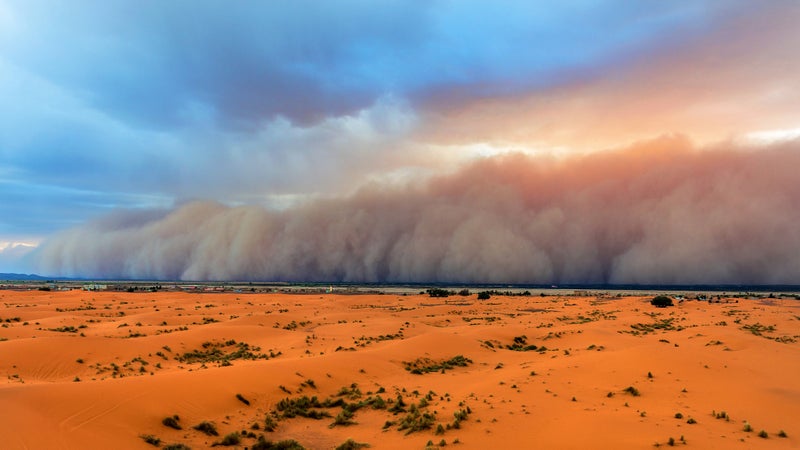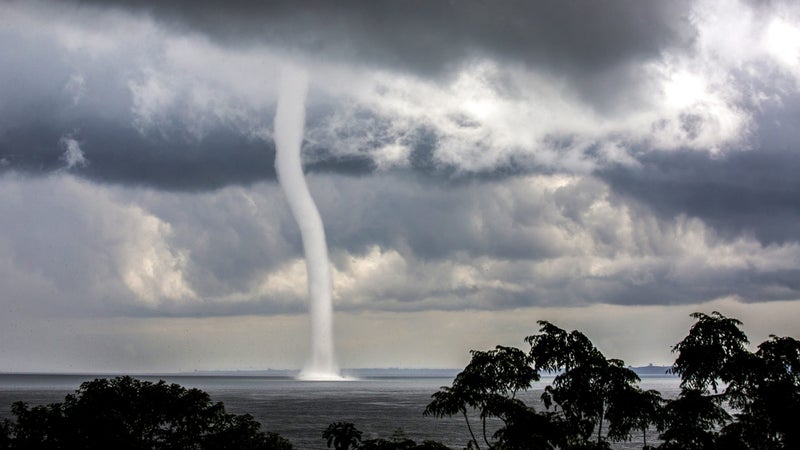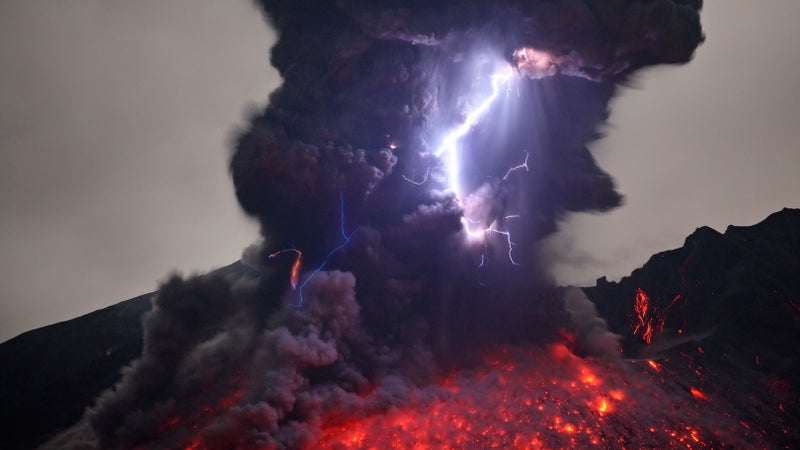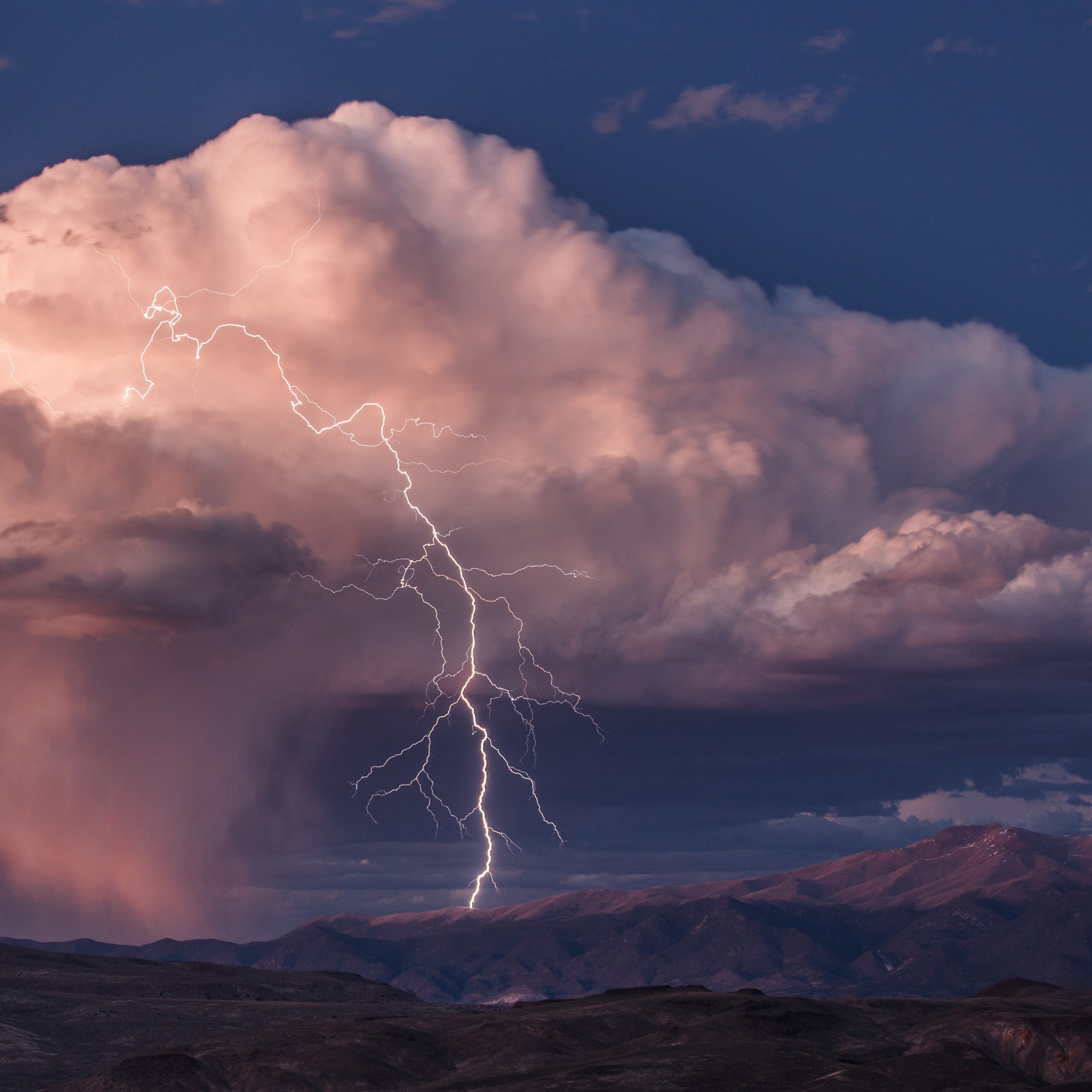It's not just the typical thunderstorm,��tornado,��or hurricane��we need to worry about anymore. The elements are stirring, and weather is changing—in ways that can be strange and frightening, fascinating and wild. And while some of the obscure and unexpected chemistry is dangerous, it's these same bizarre phenomena that make being alive a perpetual thrill.��
Haboobs

What:����up to a mile high and moving at speeds up to 60 miles per hour.
Where:��Mainly in North Africa, Australia, the Middle East, and the U.S. Southwest.
How:��As a thunderstorm dies, dry downdrafts up to 100 mph hurtle loose sand and dust��into the air.
Superfreaks:��In January 2013, Australian tugboat workers near the coastal town of Onslow snapped cell-phone photos of a��, a 50-mph orange monster that merged with a billowing white shelf cloud and swept over the Indian Ocean at sunset.
The forecast:��“Most studies indicate drier conditions in the Southwest over the coming decades,” says Arizona State University geographical sciences professor Randy Cerveny. “That would likely mean drier thunderstorms and more haboobs.”
Waterspouts

What:��An up to����– sometimes containing a visible funnel cloud – that can move at 30 knots and create winds of 200 miles per hour.
Where:��The Great Lakes, the Mediterranean, and most tropical and subtropical shallow seas. The Florida Keys average 100 to 500 spouts a summer.
How:��As warm, moist air rises to form low-lying cumulus clouds over large bodies of water, winds create a swirling vortex that can send a column of condensation up into the clouds’ base.
Superfreaks:��Waterspouts have knocked down telephone poles and lifted Cadillacs. They also could explain accounts of��: as water gets sucked into an updraft, critters can be, too. Citizens of the Australian town of Lajamanu – 326 miles from the nearest river – say it has happened at least three times in the past 40 years.
The forecast:��“If the models are right about rising sea-surface temperatures over the next century, we may see an increase in waterspout activity in the Florida Keys and tropical island nations,” says former NOAA scientist Joseph Golden.
Volcano Lightning

What:��Electromagnetic discharges that ignite during eruptions and inside ash plumes.
Where:��Any big, explosive eruption ejecting massive ash clouds, such as Eyjafjallajökull in Iceland or Chaitén in Chile.
How:��As magma breaks apart, it becomes charged, creating vent lightning that strikes out around the volcano’s mouth. Plume lightning can form as far as several hundred miles from the volcano, as erupted ash, rock, and gas interact with moisture in clouds to create bolts up to 20 miles long.
Superfreaks:��When Alaska’s Mount Redoubt erupted in 2009, more than 30 explosions over a two-month period generated more than��, with plume-lightning storms traveling 60 miles from the rim. Scientists measured 20 sessions of vent lightning as the eruption continued for two weeks. Bolts could be seen 80 miles across Cook Inlet from the town of Kenai.
The forecast:��No change. According to Ronald Thomas, a professor of electrical engineering at New Mexico Tech, incidences of lightning don’t increase over time.


